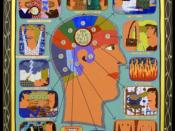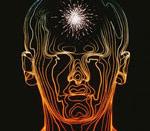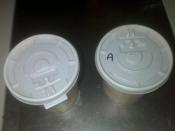It determines what we see, what we do, what we feel. It controls our emotions, our thoughts, and our conscience. What is this remarkable element of the human mind? It is called perception. Perception as defined in the Merrian-Webster Dictionary as the following-
1 a : awareness of the elements of environment through physical sensation
b: Physical sensation interpreted in the light of experience
2 a : quick, acute, and intuitive cognition : APPRECIATION
b : capacity for comprehension
Perception. As hard as it is to define it, it is impossible to correctly conceive a 'correct' or 'right' way to use it. Perception varies with not only humans, but with virtually all other animals as well, whether through instinct or with conscious thought. Let us take this a step farther. When a bee looks at a flower that is meant for feeding from, they do not only notice the colors the human mind sees.
The bee sees a yellow 'run-way' directly into the core of the flower, guiding it into the source of nectar.
This brings us to the question- 'is what we see real, or is what we see our own reality?'. What the human mind sees is only three dimensions. Since Albert Einstein first conjured the scientific possibility of a fourth dimension, human beings have longed to see it. Many people assume that it does not exist simply because they cannot see it. They are not able to see the yellow 'run-way' into the heart of a flower, but to the bee and an ultraviolet light, that 'run-way' is certainly real. People's physical use of their own perception is very limited, as such noticeable in the 'tunnel-vision' effect. A good example of the Tunnel Vision effect is a perception or thought such as 'if I cannot see it,


